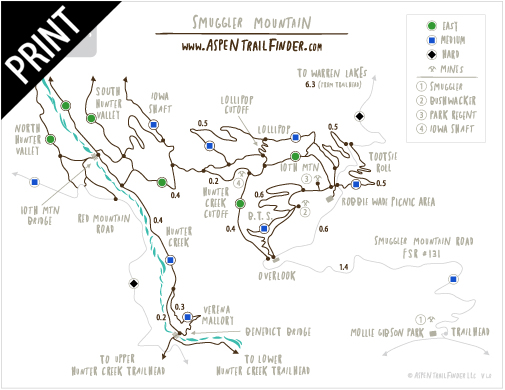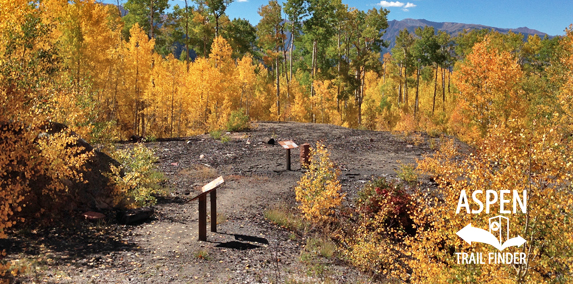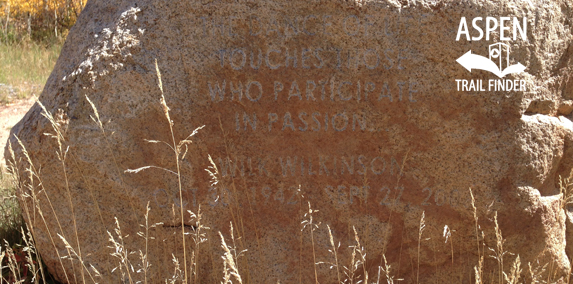Connects: Smuggler Mountain, Behind The Sign (BTS) Trail
Aspen, CO – Mine
Bushwacker Mine is an abandoned mine site on Smuggler Mountain. This is a site in Aspen, CO.
In the late 1800s, the procedure for setting up, or locating, a mining claim in Colorado was fairly simple, while work on the ground was often laborious.
Prospectors initially examined new areas for gold and silver, using experience, trained eyes, and word-of-mouth information such as leaked tips and hearsay. Often rushing to beat others to the best ground, they staked claims and developed them just enough to attract buyers and meet mining law requirements.
With luck, prospectors sold their claims, paid off debts, and moved on to new territory in their search for mineral wealth. Meanwhile, a succession of owners developed claims according to their unfolding value and available capital, ultimately heading toward profitable ore production with a lot of luck and strategy. Most claims, however, never yielded the riches that owners hoped for.
Steps for Staking a Claim
Step 1: Prospectors staked a mining claim, usually 500 x 1,500 feet in area, over a promising mineral formation by marking the corners with wooden posts. Next, in order to confirm the presence of gold or silver and maintain title to the claim, they sank a shaft or bored a tunnel and sampled the formation.
Step 2: If the claim proved valuable, the next step was to patent it, conveying ownership from the federal government to the claimant. This process included surveying and recording the claim at the General Land Office.
Step 3: On important claims, wooden posts were often replaced with stone monuments, engraved with identifying information. This made it clear that the claim was patented, discouraging encroachment and claim jumping.
This sandstone monument, moved long ago from its original location, marked a corner where the Bushwacker claim abutted the Della S. claim to the southeast. Both properties became important silver mines, yielding handsomely during the 1890s. The sandstone was quarried locally at the Peachblow Quarry on the Fryingpan River. Similar monuments marked other corners of the Bushwacker, and likely Smuggler Mountain’s other prominent mines.”
Driven between 1889 and 1893, the Cowenhoven Railway Tunnel & Development Company was an independent enterprise started by H. P. Cowenhoven and D. R. C. Brown, whose tunnel solved the problems of groundwater and deep ore bodies that had hindered silver mines on Smuggler Mountain.
During construction, workers encountered troublesome sand and groundwater that flowed at 1,500 gallons per minute within the first half mile. Overcoming those obstacles, the tunnel went on another mile to link the Bushwacker, Park Regent, Iowa, Pontiac, Empire and Mineral Farm Mines.
The tunnel provided drainage, ventilation, a haulageway, and a platform for working the view both upward and downward. Mines paid $600 per month plus fees based on haulage volume. This eliminated or reduced hoisting and pumping to the surface, maintaining a surface plant, hauling fuel up and freighting ore down the mountain, and allowed Smugger mines to reach peak production even in the wake of the 1893 Silver Crash.
David Hyman took ownership of the Cowenhoven Tunnel in 1911, and it was operated and maintained by lessees until WWII.”



























